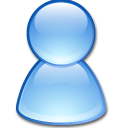Article,
Sleep disorders in children with cerebral palsy.
Dev Med Child Neurol, 48 (7): 564--568 (July 2006)
DOI: 10.1017/S0012162206001198
Abstract
To determine the frequency and predictors of sleep disorders in children with cerebral palsy (CP) we analyzed the responses of 173 parents who had completed the Sleep Disturbance Scale for Children. The study population included 100 males (57.8\%) and 73 females (42.2\%; mean age 8y 10mo SD 1y 11mo; range 6y-11y 11mo). Eighty-three children (48.0\%) had spastic diplegia, 59 (34.1\%) congenital hemiplegia, 18 (10.4\%) spastic quadriplegia, and 13 (7.5\%) dystonic/dyskinetic CP. Seventy-three children (42.2\%) were in Gross Motor Function Classification System Level I, 33 (19.1\%) in Level II, 30 (17.3\%) in Level III, 23 (13.3\%) in Level IV, and 14 (8.1\%) in Level V. Thirty children (17.3\%) had epilepsy. A total sleep problem score and six factors indicative of the most common areas of sleep disorder in childhood were obtained. Of the children in our study, 23\% had a pathological total sleep score, in comparison with 5\% of children in the general population. Difficulty in initiating and maintaining sleep, sleep-wake transition, and sleep breathing disorders were the most frequently identified problems. Active epilepsy was associated with the presence of a sleep disorder (odds ratio OR=17.1, 95\% confidence interval CI 2.5-115.3), as was being the child of a single-parent family (OR=3.9, 95\% CI 1.3-11.6). Disorders of initiation and maintenance of sleep were more frequent in children with spastic quadriplegia (OR=12.9, 95\% CI 1.9-88.0), those with dyskinetic CP (OR=20.6, 95\% CI 3.1-135.0), and those with severe visual impairment (OR=12.5, 95\% CI 2.5-63.1). Both medical and environmental factors seem to contribute to the increased frequency of chronic sleep disorders in children with CP.
Tags
- cerebral
- child;
- children;
- comorbidity;
- cross-sectional
- disability
- disabled
- disorders
- epilepsy;
- evaluation;
- female;
- humans;
- illness
- index;
- male;
- of
- palsy;
- severity
- sleep
- studies;
